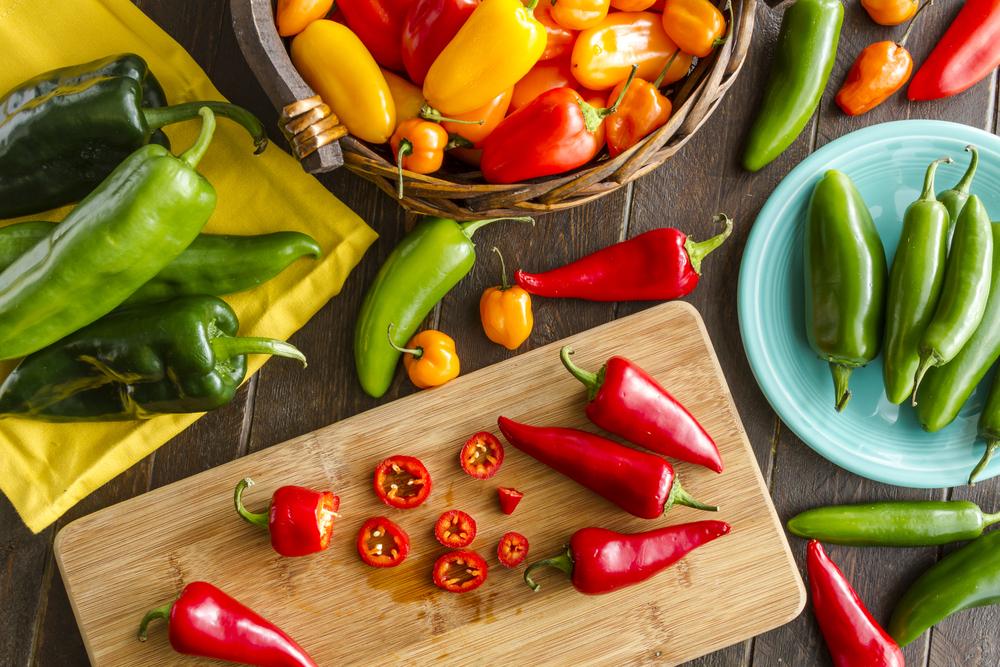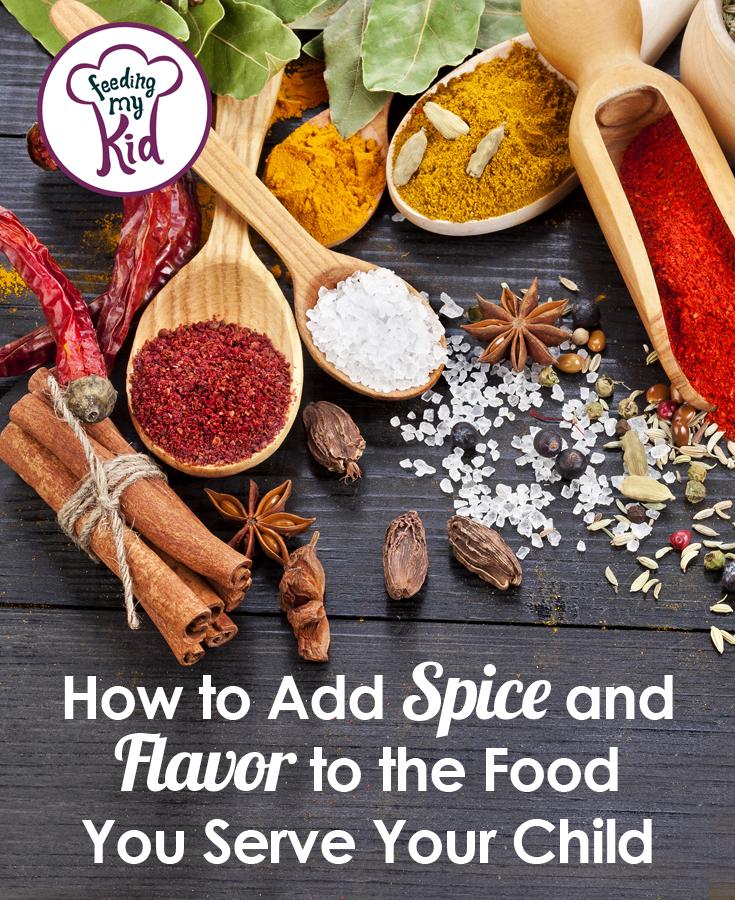 Kids love flavors too. Many parents simply steam veggies and then wonder why their kids don’t eat them. Since your little one can’t tell you, let me, steamed veggies can be bland and boring. If you don’t find the veggies yummy, then your child probably won’t either.
Kids love flavors too. Many parents simply steam veggies and then wonder why their kids don’t eat them. Since your little one can’t tell you, let me, steamed veggies can be bland and boring. If you don’t find the veggies yummy, then your child probably won’t either.
One way to help expose your children to healthier foods is to make them taste better by using a variety of herbs, spices, and flavors. It’s best to limit salting your foods so your child doesn’t grow too dependent on salty foods for flavor. Unfortunately, most processed foods and restaurants rely heavily on salt for flavor, so keep that in mind when serving these foods.
My Kid Used to Eat Veggies, What Happened?
If you are wondering why your child used to eat veggies and then stopped, it’s probably because he’s had a taste of refined sugar and processed foods. He probably has a new love of crackers, pretzels and sweets. Don’t despair. It’s common for your children to get pickier as they get older. We created an ultimate resource guide to help your picky eater.
Don’t Buy Processed Baby/Toddler Foods, If You Can Help It
Eating vegetables really starts to decline around 9 months of age, often because processed foods start to get introduced. It’s generally more enjoyable for kids to crunch on foods like crackers than to eat pureed squash or smashed avocado. If kids aren’t introduced to these processed foods, such as pretzels and crackers, then you have more time to keep offering them savory (vegetable) foods filled with seasonings and spices. If you don’t want a fight about food later on, don’t offer it now.
One way to help expand a child’s palate is to add as much variation to their diets as possible, which includes adding herbs and spices to your dishes!
Did You Know That A Child’s Taste Buds Are More Sensitive Than Yours?
Over time, our senses dull, especially our sense of taste. Some children are picky eaters because they can be overwhelmed by flavors. Keep this in mind, as you introduce foods to your child. Studies show that a child’s taste keeps changing, so don’t give up even after 10-20 introductions. Children’s tastes are still developing! Let him develop and help your children enjoy a variety of flavorful foods.
When Can I Introduce Spices To My Child?
Some pediatricians will say to wait until about 8 months of age, but that’s not necessarily for allergy reasons. It’s mostly to make sure children’s stomachs are strong enough to handle a possible upset from the spice or herb.
Think about kids from other countries. Many don’t have processed baby foods like we do in the US, so international families will often introduce whatever the family is eating. This can include curry, chili’s, cilantro and turmeric.
If You Are Pregnant Or Breastfeeding, Keep Eating Spices And Herbs!
 I didn’t have food cravings, but I had a ton of food aversions when I was pregnant with my twins. I couldn’t eat much of anything, except for pasta and meat. I actually was so sick of my boring pregnancy palate that I couldn’t wait to start eating vegetables again to mix the flavors up. I thought if I never saw pasta and meat again, it would be too soon.
I didn’t have food cravings, but I had a ton of food aversions when I was pregnant with my twins. I couldn’t eat much of anything, except for pasta and meat. I actually was so sick of my boring pregnancy palate that I couldn’t wait to start eating vegetables again to mix the flavors up. I thought if I never saw pasta and meat again, it would be too soon.
Knowing what I know now, I wish I pushed through these food aversions and ate so many more flavors and varieties of food while pregnant.
It’s amazing, but these flavors go through the umbilical cord and through breastmilk to start developing a child’s taste buds. Children are more likely to like savory foods if you ate them during pregnancy and/or while nursing. If you didn’t breastfeed, don’t worry; you can still help to establish children’s early taste preferences by offering all these foods early on when introducing new foods.
Your Breastfed Baby Eats What You Eat
Watch the video below to learn more and check out this article
Add Herbs And Mild Spice To Baby Food
Add spices and herbs to your baby food, regardless if you make your own or buy pre-made foods. If you buy pre-made baby food, still add the extra flavor.
Here Is A Great List Of Herbs And Spices To Start With:
 Pepper
Pepper- Salt (try to reduce your use of salt in the food you serve kids)
- Garlic
- Onion powder
- Thyme
- Rosemary
- Basil
- Oregano
- Dill
- Mint
- Sage
- Chives
- Curry powder
- Chili powder
- Cinnamon
- Nutmeg
- Clove
- Ginger
- Anise
- Lemon zest
- Vanilla (watch for alcohol content if not baked or cooked)
Still Not Sure How To Incorporate Spices Into Meals?
Cinnamon: You can add cinnamon to most roasted root vegetables, pumpkin, bananas, apples and oatmeal. Check out recipes with cinnamon.
Nutmeg: Add it to apricots, peaches, blueberries nectarines and apples.
Ginger: Add to squash, carrots, beans and pears.
Clove: Add to pineapple, pumpkin, sweet potatoes
Citrus like Orange zest or lemon: Add to cauliflower, carrots, Brussels sprouts, green beans, asparagus.
Share what foods your kids love in our forums.
Need More Ideas
It’s unrealistic to keep our refrigerator stocked up like a 5-star restaurant. Countless recipes require exotic ingredients to no avail. Here is a great resource for serving the same 5 fruits and 5 vegetables 100 different ways. This way you can keep offering zucchinis and you and your little one won’t get bored.
Here are sensory activities with herbs and spices. Who knew? Let us know if you have tried any of these. These are great activities to try to explore spices with your child.
Share your story
I went on a personal journey looking for spices to expand the types of foods my twins eat and amplify flavors. Share your stories, what’s worked, what hasn’t worked.
Check Out More Kids Recipes Here:
- Cooking with Kids: Creative Ideas to Get Your Kids in the Kitchen
- Crispy, Oven Roasted Cauliflower Recipes. Get Your Kids to Love Cauliflower with These Recipes
- Vitamin Packed Green Smoothies for Kids. 20 Easy and Yummy Ideas!

